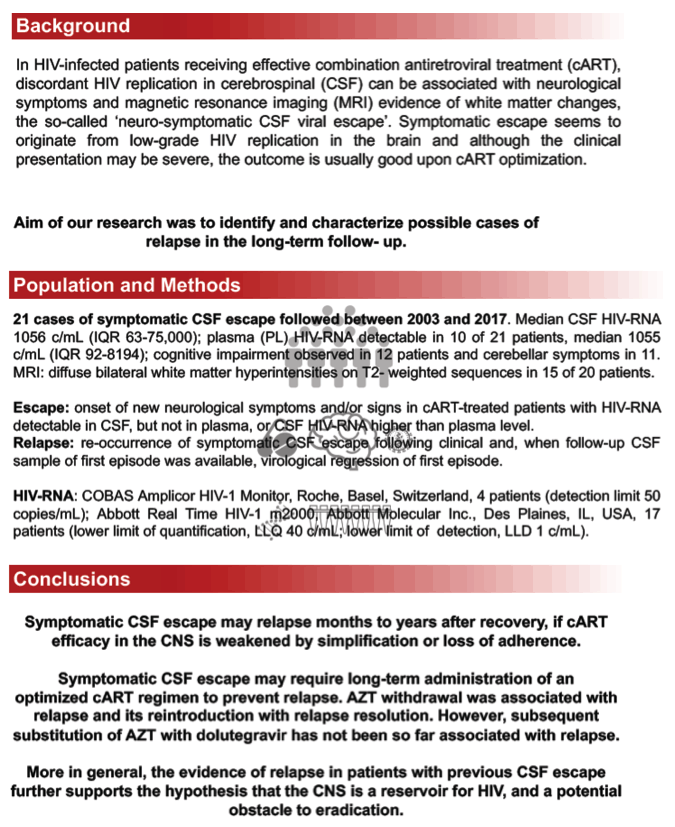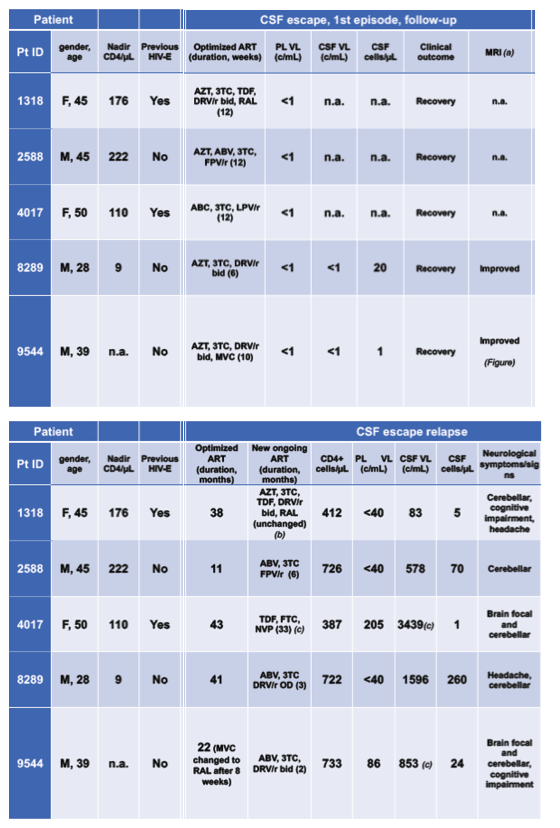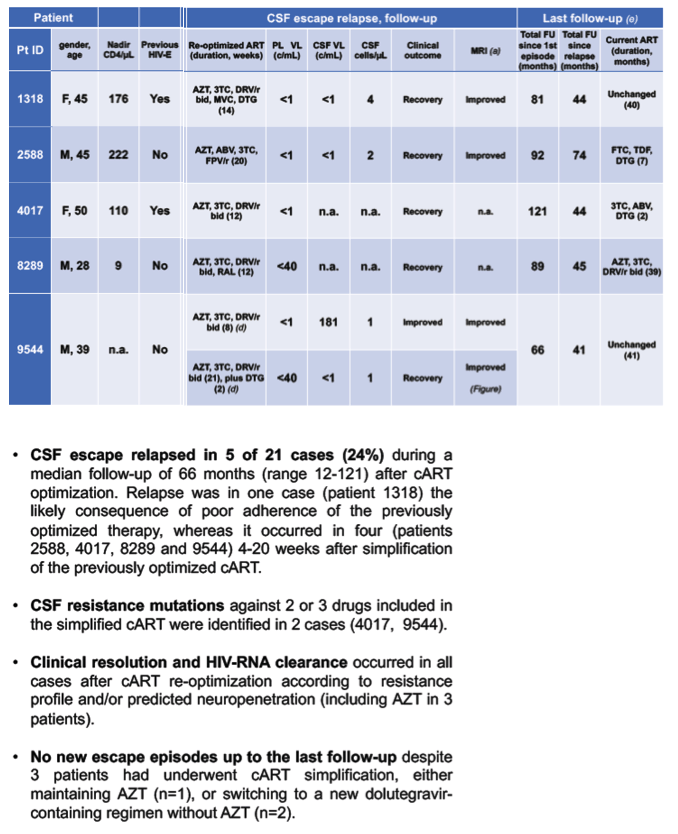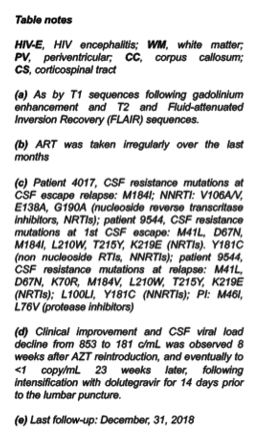 |
 |
 |
| |
RELAPSE OF SYMPTOMATIC CSF HIV ESCAPE
UPON PREVIOUSLY OPTIMIZED C-ART REGIMEN CHANGES
|
| |
| |
Reported by Jules Levin
CROI 2019 March 4-7 Seattle
Francesca Ferretti1*, Valentina De Zan1, Filippo Turrini1, Enzo Boeri1, Simonetta Gerevini1, Nicola Gianotti1, Hamid Hasson1, Adriano Lazzarin1, Paola Cinque1
1 IRCCS San Raffaele Scientific Institute Milan, Italy; *Current address: Chelsea and Westminster Hospital NHS Trust, London, UK
CROI: Rebound Of HIV-1 In Cerebrospinal Fluid (CSF) After Treatment Interruption (TI)ς - (03/14/19)
CROI: Neurosymptomatic HIV-1 CSF Escape can Occur with Replication in CD4+ T Cells in the CNS
- (03/13/19)
CROI: PML-IRIS ensuing CNS and subsequent peripheral viral escape of ARV-resistant variants
- (03/14/19)

program abstract
RELAPSE OF SYMPTOMATIC CSF HIV ESCAPE UPON PREVIOUSLY
OPTIMIZED cART REGIMEN CHANGES
Francesca Ferretti, Valentina De Zan, Filippo Turrini, Enzo Boeri, Simonetta
Gerevini, Nicola Gianotti, Hamid Hasson, Adriano Lazzarin, Cinque Paola
San Raffaele Scientific Institute, Milan, Italy
Background: Neuro-symptomatic cerebrospinal fluid (CSF) viral escape is a condition of persons receiving combination antiretroviral treatment (cART), who show a discordant HIV replication between CSF and plasma, associated with neurological symptoms and magnetic resonance imaging (MRI) white matter changes, and it is usually reverted upon cART optimization. Our aim was to identify and characterize possible cases of relapse in the long-term follow-up.
Methods: A cohort of 21 cases of symptomatic CSF escape was followed between 2003 and 2017. Cases were defined as onset of new neurological symptoms and/or signs in cART-treated patients with HIV-RNA detectable in CSF, but not in plasma, or CSF HIV-RNA higher than plasma level. Relapse was defined as the re-occurrence of symptomatic CSF escape following clinical and, when follow-up CSF sample of first episode was available, virological regression of first episode.
Results: In the 21 CSF escape cases, median CSF HIV-RNA was 1056 c/mL (IQR 63-75,000); plasma HIV-RNA was detectable in 10 of 21 patients, median 1055 c/mL (IQR 92-8194); cognitive impairment was observed in 12 patients and cerebellar symptoms in 11. MRI demonstrated diffuse bilateral white matter hyperintensities on T2-weighted sequences in 15 of 20 patients. During a median follow-up of 66 months (range 12-121) after cART optimization, CSF escape relapsed in 5 of 21 cases (24%) as a consequence of cART simplification, which included zidovudine (AZT) withdrawal, in 3, or poor adherence in 2 (Table). CSF resistance mutations were identified in 2 cases. There were no significant differences between first escape and relapse as for current CD4+ cells (median 300 vs. 722/μL), CSF HIV-RNA (median 1000 vs. 853 c/mL), HIV-RNA detectability in plasma (40% vs. 60%), clinical and MRI findings. cART re-optimization according to resistance profile and/or predicted neuropenetration, including AZT in 3 patients, lead to clinical resolution in all
patients and HIV-RNA clearance in all of the tested cases. At last follow-up, 3 patients had underwent cART simplification, either maintaining AZT (n=1), or switching to a new dolutegravir-containing regimen without AZT (n=2), with no new escape episodes.
Conclusion: CSF escape may relapse months to years after recovery, if cART efficacy in the CNS is weakened by simplification or loss of adherence. These observations also support, at least in some patients, the presence of a viral reservoir within the CNS.






|
| |
|
 |
 |
|
|